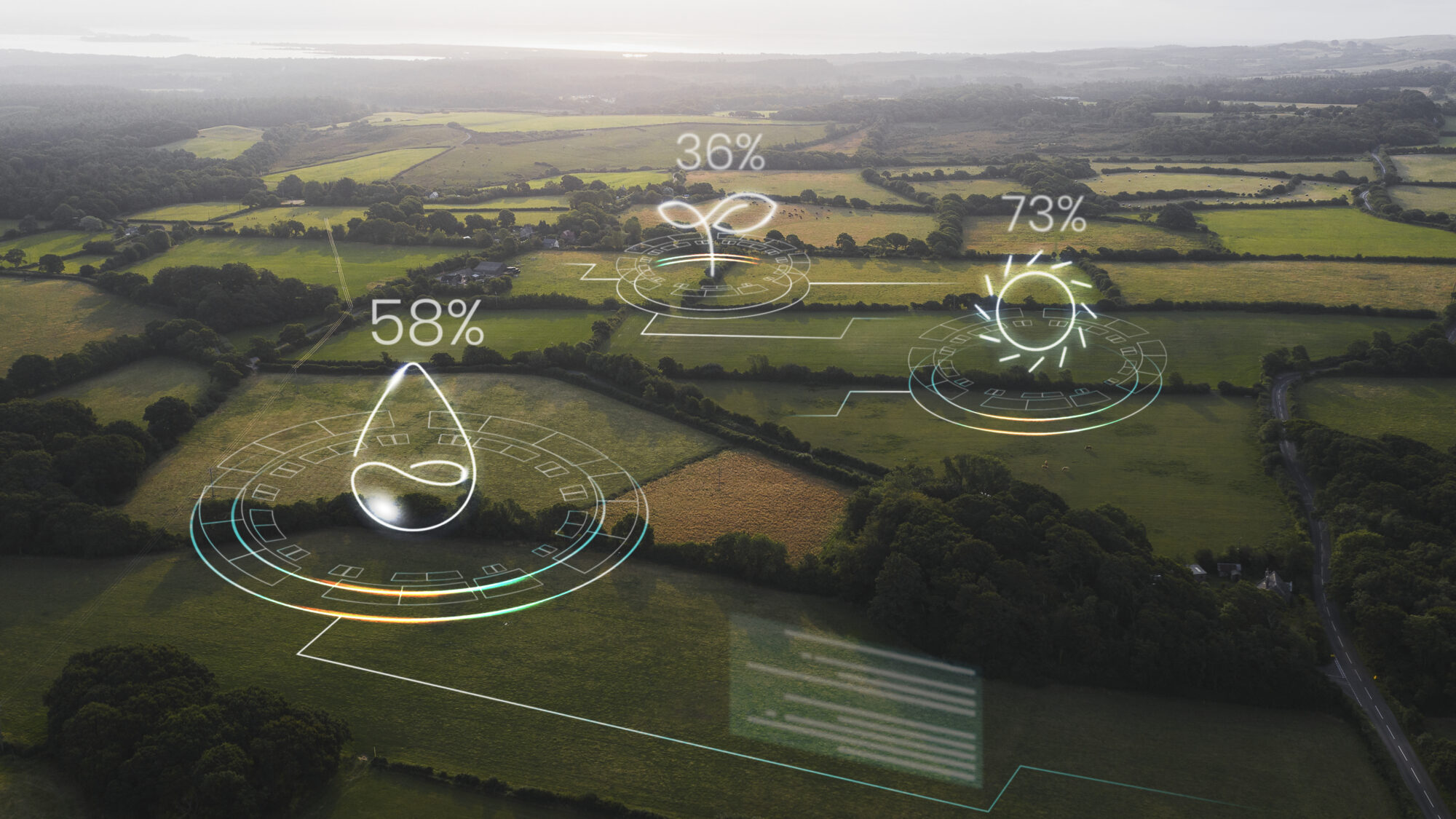Since the dawn of civilization, agriculture has been the backbone of human survival and progress. Over the millennia, from rudimentary tools to the introduction of machinery during the Industrial Revolution, farming has seen constant change. In recent times, the agricultural sector witnessed a technological boom, with the introduction of drones, automated tractors, and precision farming.
Augmented reality as the next frontier in farming technology
Augmented Reality (AR) merges the real-world environment with computer-generated perceptual information, sometimes across multiple sensory modalities. It’s not a mere science fiction trope anymore; it’s a real and rapidly growing technological phenomenon. AR’s introduction to agriculture promises to push the boundaries, making processes more efficient, accurate, and interactive. At the heart of every technological adoption lies a fundamental question: What problem does it solve? For AR in agriculture, the value is multifaceted. It offers real-time data visualization on the farm, enhances training methods, and promises to improve yield quality and quantity. With rising global food demands and the challenges of climate change, AR’s potential role in revolutionizing farming solutions cannot be understated.
Understanding augmented reality in agriculture
Augmented reality provides its users with an enhanced version of reality where live direct or indirect views of physical, real-world environments have superimposed computer-generated images over them. In simpler terms, AR integrates digital information with the user’s environment in real time. Unlike Virtual Reality (VR), which creates an entirely artificial environment, AR uses the existing environment and overlays information on top of it.
How does AR stand apart from other technological tools in agriculture? While technologies like drones provide aerial views and automated tractors assist in planting, AR provides an immersive, interactive experience. For instance, while a drone might capture an image of a field, AR can overlay that image with real-time data about soil health, moisture levels, or pest infestations, allowing for immediate and informed decisions.
Visual information processing remains one of the human brain’s most efficient functions. AR taps into this strength by providing farmers with visual data. Instead of interpreting numbers on a screen or spreadsheet, farmers can now ‘see’ the data in context. This shift from abstract to visual data can significantly expedite problem-solving and enhance comprehension, particularly in a field as complex and variable as agriculture.
The rise of AR in farming
The journey of AR in farming is a testament to the ever-evolving nature of technology. AR’s potential in agriculture was recognized when tech experts and agriculturalists began exploring its capabilities in data visualization and simulation. While still in its early stages, forward-thinking farmers and agribusinesses started experimenting with AR, leading to its current status in the sector.
Several factors contribute to AR’s rising prominence in farming. The pressing need for efficient resource management, given the challenges of climate change, makes real-time data crucial. Additionally, the younger generation of farmers, more tech-savvy and open to innovation, is looking for tools that align with their digital mindset. Moreover, the success stories from early adopters have created a ripple effect, prompting more and more stakeholders to explore AR’s potential.
Traditionalists may be concerned that AR could overshadow or replace the age-old wisdom passed down through generations of farmers. In reality, AR serves as a tool that complements, rather than competes with, traditional knowledge. By providing a platform where centuries-old practices meet cutting-edge technology, AR ensures that farming remains rooted in its rich history while simultaneously embracing the future.
Applications and innovations of AR in agriculture
Using AR glasses or mobile devices, farmers can now walk through their fields and instantly receive layered, real-time data about their crops. This can include information about soil moisture, nutrient levels, or potential diseases. This instant accessibility to comprehensive data allows for timely interventions, potentially saving crops from diseases or optimizing their growth conditions.
Training becomes more interactive with AR. New farmworkers or even seasoned farmers can use AR to learn about advanced agricultural techniques, understand machinery functions, or identify crop diseases. Through AR, one can simulate scenarios, making training sessions not just theoretical but deeply experiential and practical, thereby bridging the gap between knowledge and application.
Precision farming, which focuses on optimizing the efficiency of inputs like water, seed, and fertilizer, gets a significant boost with AR. For instance, using AR glasses, a farmer can accurately determine where to plant seeds in a field or how to optimize irrigation paths. Furthermore, with AR-enhanced tools, farmers can get real-time feedback on their actions, ensuring that resources are used optimally and wastage is minimized.

presentation to try
Nsflow in action
Future farming with AR: what lies ahead?
The future of AR in farming is not just standalone but in its seamless integration with other technologies. Imagine a world where your drone captures aerial footage of your farm, and the same is instantaneously analyzed and projected onto your AR device, providing a 360-degree view of your farm’s health. The synergy between AR, IoT (Internet of Things), AI, and drones could redefine the benchmarks of farming efficiency and productivity.
Sustainability is not just a buzzword; it’s the need of the hour. As farmers globally grapple with the challenges of climate change, AR offers potential solutions. AR can aid in creating farming simulations that test the effectiveness of eco-friendly practices, helping in the transition to greener agricultural methods. Furthermore, AR’s precision tools ensure that resources are used efficiently, supporting sustainability goals.
While the horizon looks promising, it’s also dotted with challenges. The high costs of AR technology, the need for robust digital infrastructure, and resistance from traditionally-minded farmers can hinder AR’s widespread adoption. Moreover, the accuracy and effectiveness of AR tools are contingent on the quality of data fed into them. As the industry grows, it will be imperative to address these challenges to fully harness AR’s potential.
The takeaway
The advancement of AR in agriculture reminds of the progression of a seed evolving into a mature tree. This technology is not just elevating conventional farming techniques, but also spearheading innovative sustainable methods, marking a significant transformation in agricultural methodologies. For AR to achieve its utmost capacity, a collaborative initiative across the board is imperative. This includes policymakers, farmers, technological innovators, and educational institutions in agriculture. The objective goes beyond merely integrating new technology; it encapsulates the vision of shaping a sustainable, efficient, and forward-thinking agricultural landscape.
As we stand on the brink of this technological revolution, it’s essential to remember that the goal isn’t to replace tradition but to augment it. AR, in its essence, is a tool, a bridge between age-old agricultural wisdom and the future’s technological promise. In this harmonious blend lies the future of farming.


























